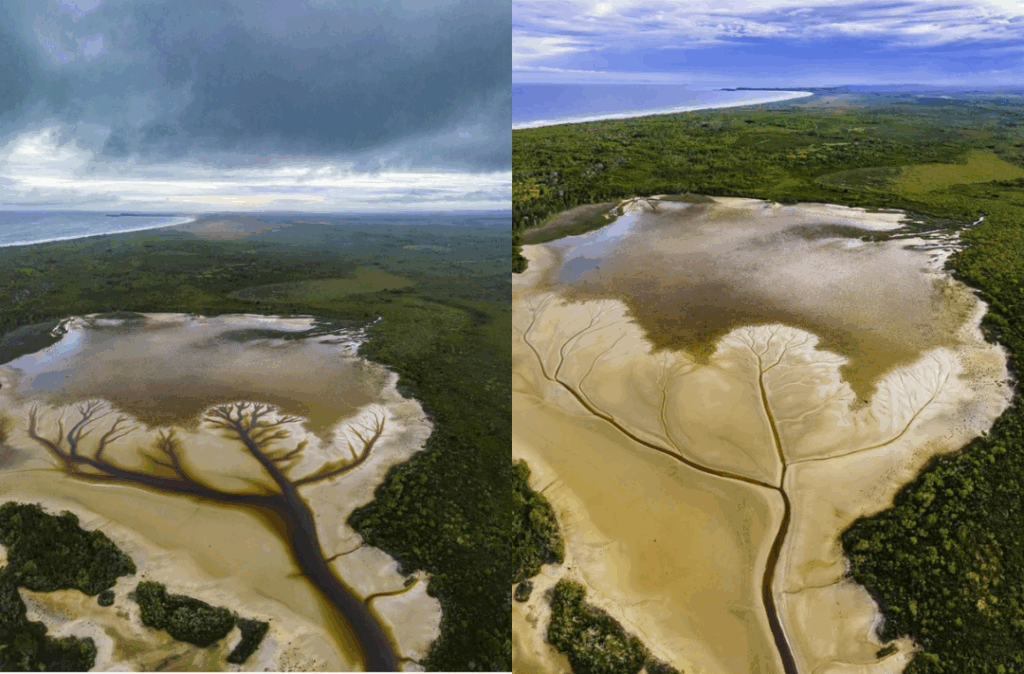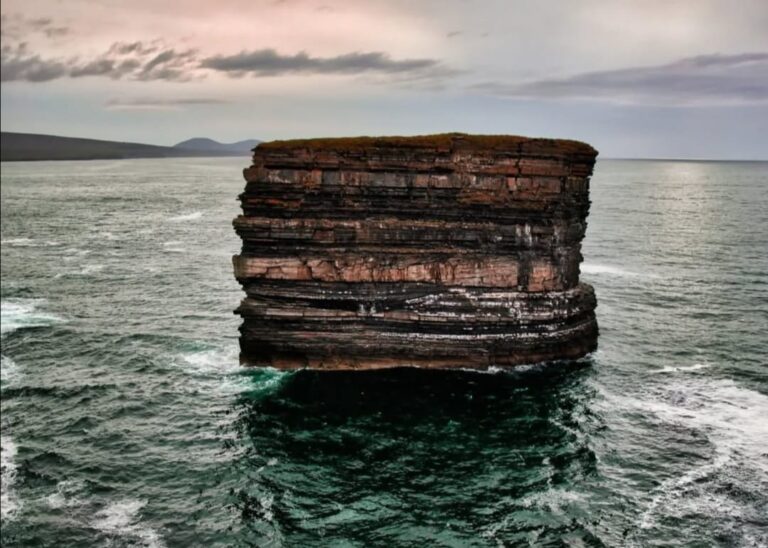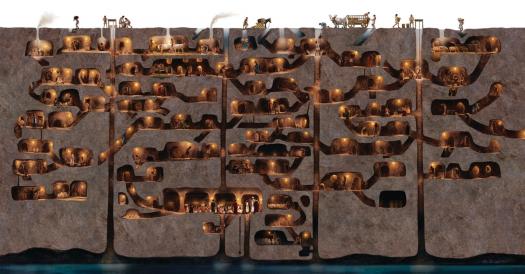Lake Cakora, located near Brooms Head in Yuraygir National Park, New South Wales, Australia, is home to one of nature’s most striking phenomena: the “Tree of Life.”
This mesmerizing pattern, visible only from above, isn’t a real tree, but a breathtaking result of rainwater, tides, and tea-tree oil interacting across the lake’s natural drainage channels.
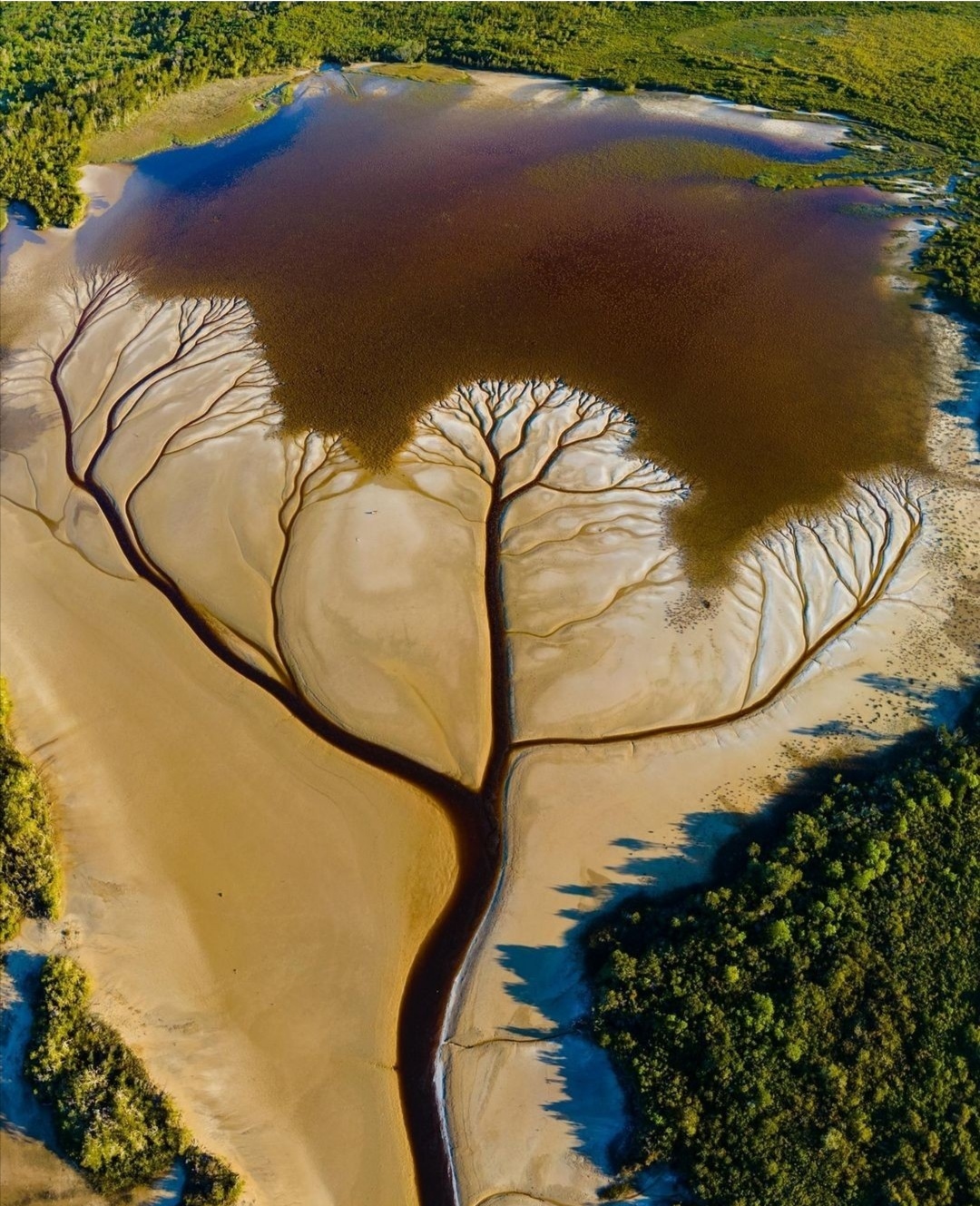
After heavy rains, water flows through these channels toward the ocean. As it recedes, it leaves behind swirls of tea-tree oil from surrounding vegetation, which stain the paths in dark, rich tones.
From above, the scene resembles a massive tree with sprawling branches, echoing the timeless symbol of life, connection, and growth.
The phenomenon was first captured by drone photographer Derry Moroney, who had been photographing the lake regularly.
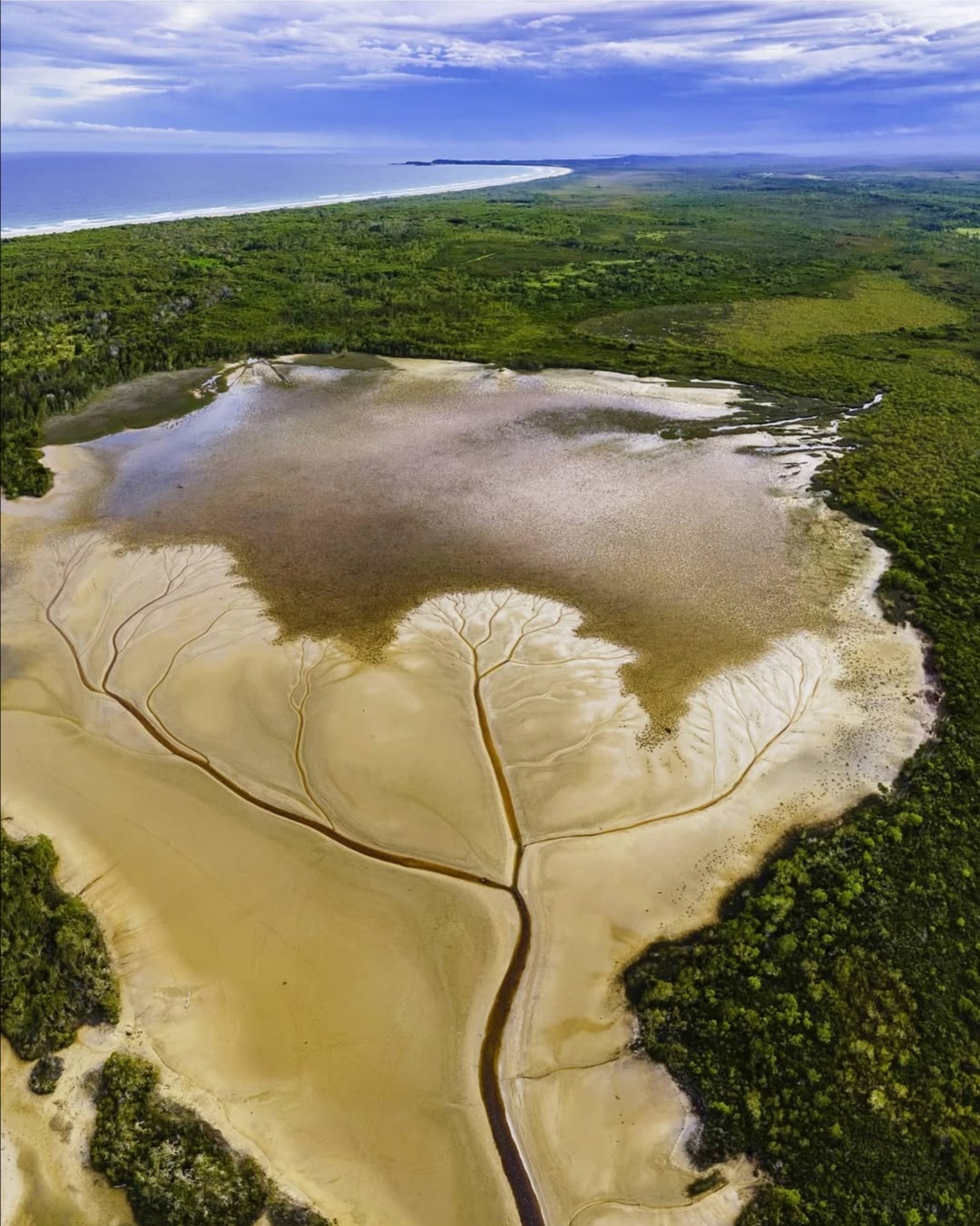
About six months into his project, he noticed the tree-like shape forming naturally across the landscape. He flies his drone at about 119 meters (around 390 feet) to fully capture the view.
Since then, his images have gone viral, drawing global attention for their detail and beauty. The pattern shifts with the weather and tides and sometimes appearing golden, other times brown or aquamarine – making it feel like a living artwork.
Beyond its visual beauty, the area has a deeper history. The tea-tree oil that shapes the image was traditionally used by Indigenous Australians for its healing properties, and the waters around Lake Cakora were even used in birthing practices for their natural antiseptic qualities.

Today, visitors can explore the lake by foot during low tide or paddle through its estuary. Best seen after heavy rains, the “Tree of Life” of Lake Cakora is a powerful reminder of nature’s hidden artistry.
